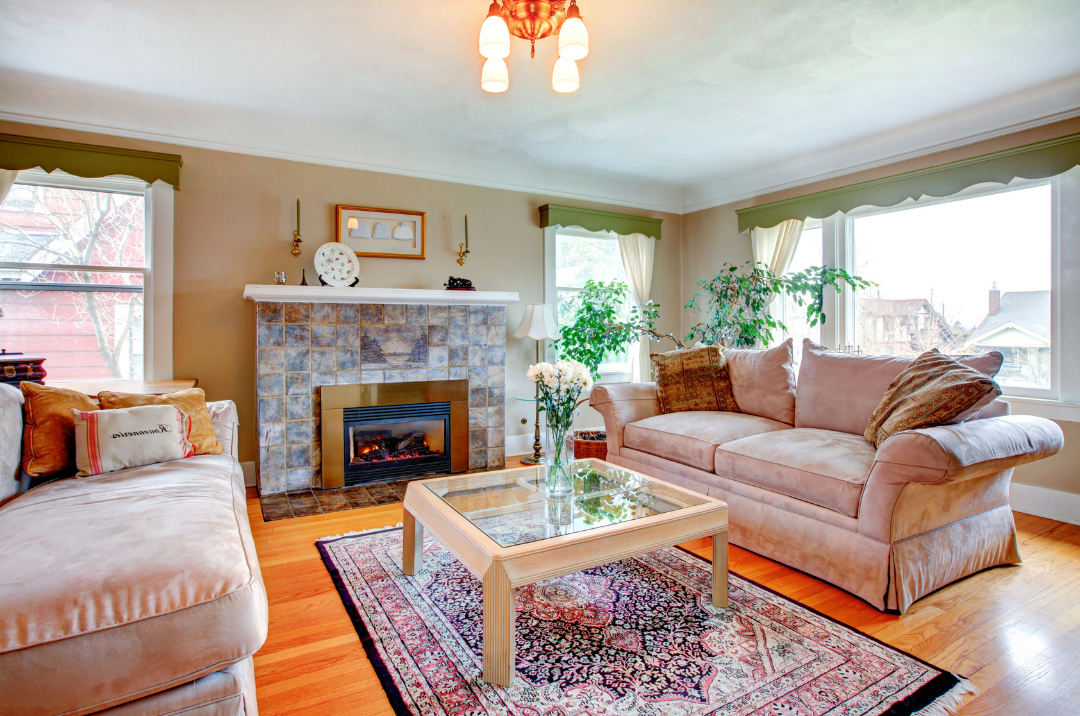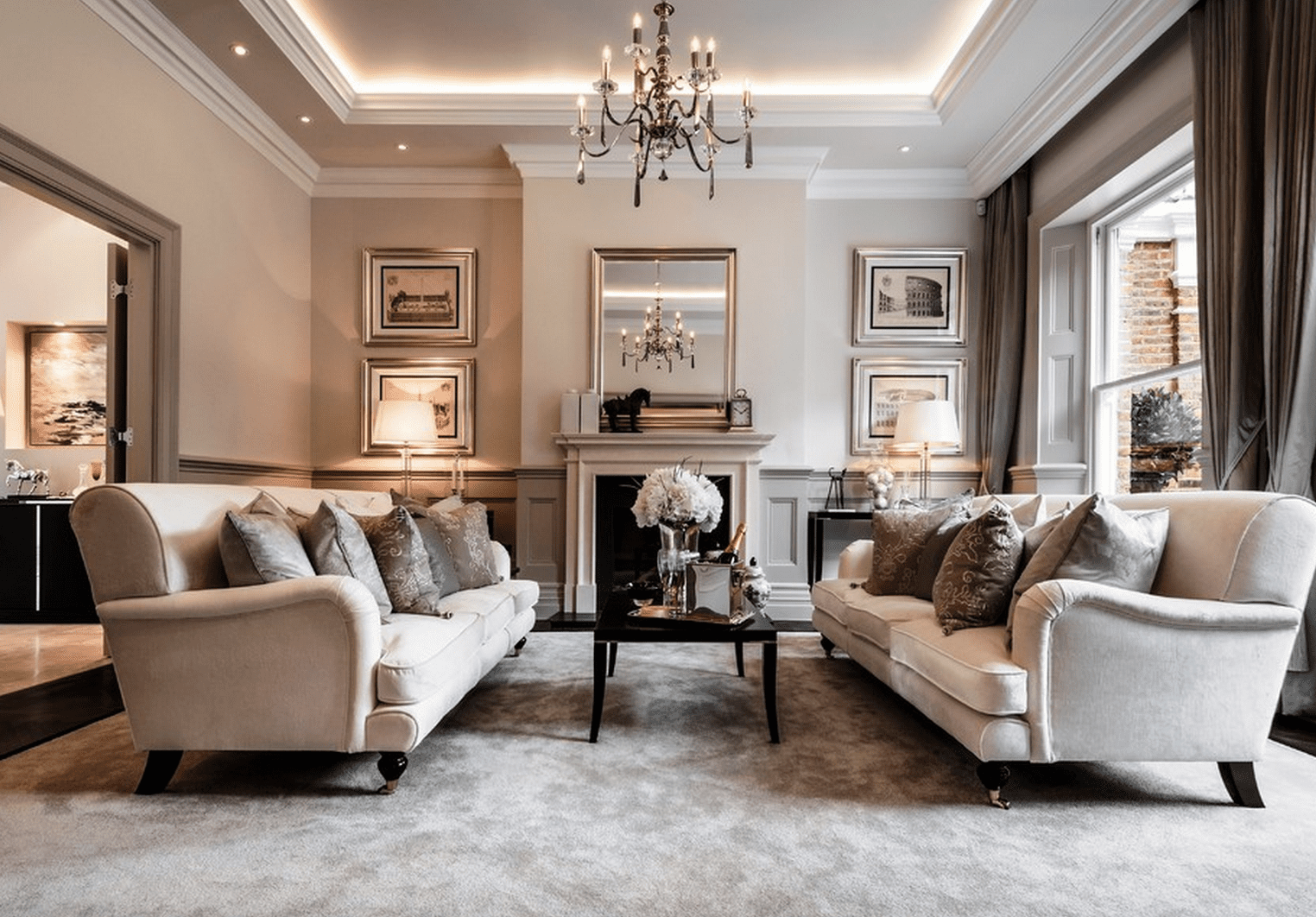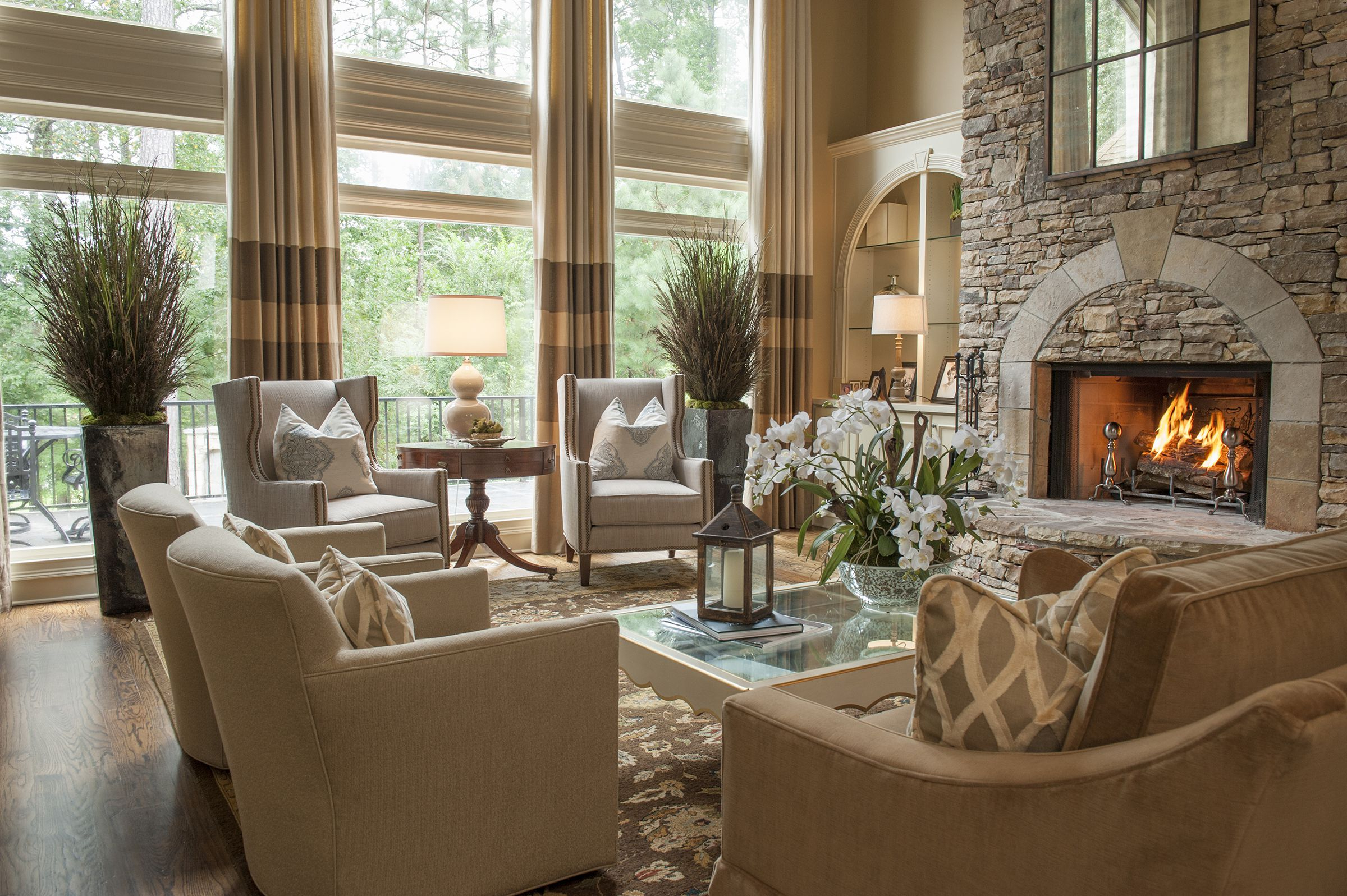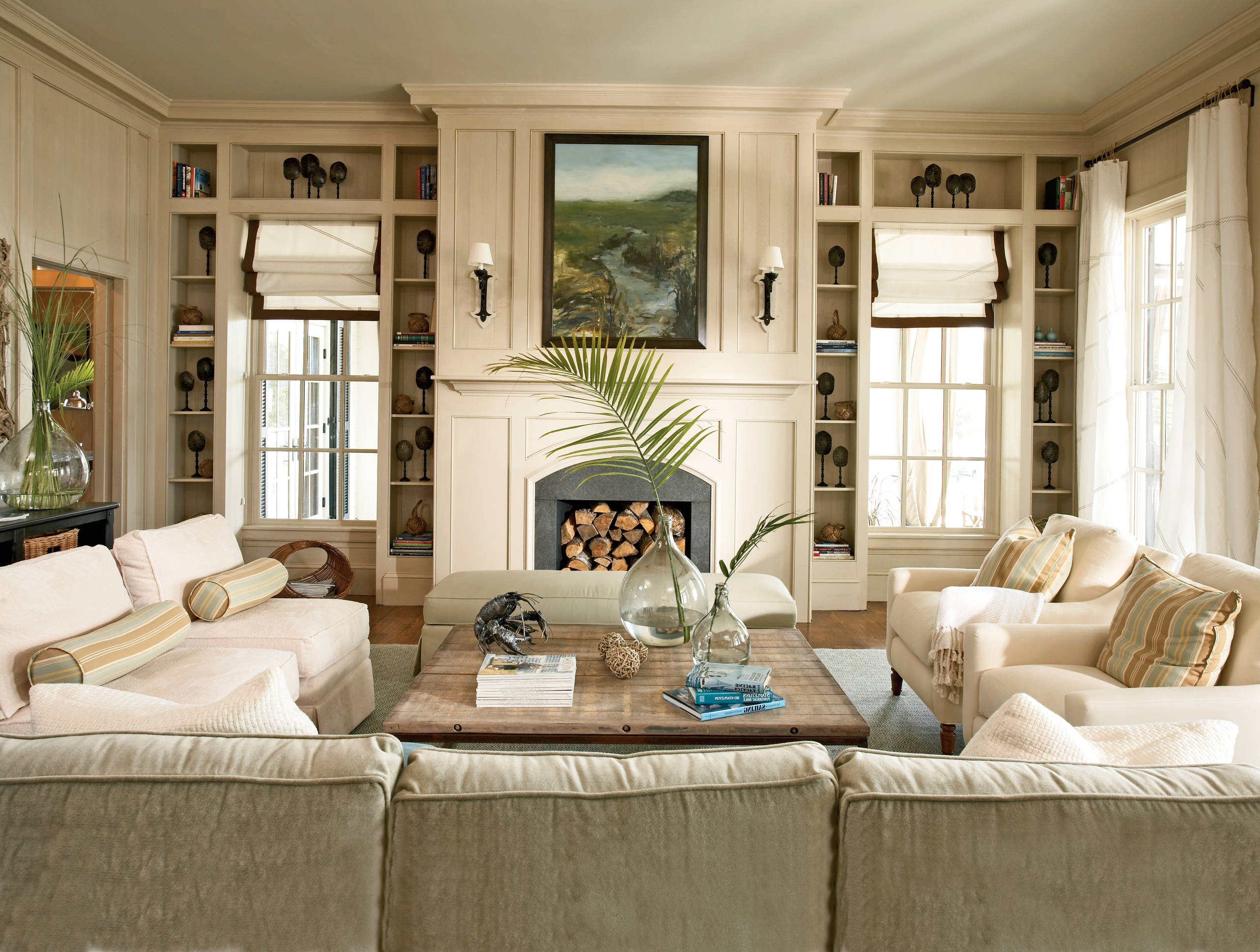There’s something magical about a living room that feels both welcoming and refined. It’s not just about expensive furniture or trendy colors – it’s about understanding the classic principles that have made certain designs timeless. Whether you’re renovating your entire space or simply looking to refresh a single room, knowing what makes a traditional living room truly beautiful can transform your home into a sanctuary of comfort and style.
Traditional living rooms have a special quality that transcends passing trends. They’re designed to last, to feel comfortable, and to create warmth that invites people in. What makes these spaces so appealing isn’t just their appearance – it’s how they make us feel when we step inside. The secret lies in combining classic design elements that work together harmoniously. From the way light filters through heavy drapes to the careful arrangement of furniture, every detail matters. These rooms speak to our sense of history, craftsmanship, and the simple joy of gathering with loved ones. They’re the kind of spaces that don’t just look good today, but will continue to feel right tomorrow.
The Foundation of Traditional Design
Traditional living rooms start with solid foundations that support everything else. Think of these as the backbone of your space – they’re the elements that provide stability and character. The first thing to consider is the architectural features of your room. High ceilings, crown molding, and wainscoting often serve as the canvas upon which traditional design flourishes. These details aren’t just decorative; they create layers of visual interest that make a room feel substantial and purposeful.
Another crucial element is the color palette. Traditional rooms typically feature muted tones that create calmness and sophistication. Deep forest greens, warm browns, rich burgundies, and creamy whites work beautifully together. These colors don’t compete with each other – instead, they create a peaceful environment that feels like a gentle embrace. Consider how these hues interact with natural light, especially during different times of day. The same wall might look completely different in morning sunlight versus evening glow.
Furniture Choices That Tell a Story
When selecting furniture for a traditional living room, you’re not just choosing items to sit on or store things. You’re picking pieces that contribute to the overall narrative of your space. Traditional furniture tends to be substantial, well-made, and often heirloom quality. Look for pieces with graceful lines and attention to detail. The legs of chairs should be elegant, not overly ornate, and the overall silhouette should feel balanced rather than rigid.
Consider the importance of mixing different textures and materials. A leather sofa might be paired with velvet armchairs, while wooden coffee tables could complement metal accents. This variety keeps the space interesting without overwhelming it. Don’t overlook the significance of scale too. A large piece of furniture in a small room can make everything feel cramped, while tiny furniture in a big space can get lost. Finding that perfect balance creates visual harmony.
One of the most important aspects is the seating arrangement. Traditional rooms often center around conversation areas. This means positioning furniture to encourage interaction rather than isolated sitting. A circular or L-shaped layout works particularly well because it naturally draws people together. The focal point of the room – whether it’s a fireplace, window, or artwork – should guide the placement of seating.
Natural Materials and Textures
Traditional design celebrates the beauty of natural materials in ways that feel both luxurious and grounded. Wood, leather, silk, and wool aren’t just choices – they’re statements about craftsmanship and quality. When you touch these materials, you can feel the difference between mass-produced items and carefully crafted pieces.
Wooden floors, whether oak, maple, or cherry, add warmth and character to any room. They’re not just functional; they tell stories about the craftsmanship involved in creating them. The grain patterns in wood create subtle variations that change with lighting, making every moment in the room unique. Hardwood floors also age gracefully, developing patinas that enhance their beauty over time.
Natural fabrics play a significant role too. Upholstery in silk, velvet, or linen creates texture that’s both inviting and sophisticated. These materials drape differently than synthetic alternatives, giving furniture a more organic, lived-in look. The way fabric moves with the body, the way it catches light, and the way it ages all contribute to the overall feeling of comfort.
Textiles like area rugs, throw pillows, and curtains offer another layer of richness. Choose patterns that complement rather than compete with each other. A subtle geometric pattern on a rug can tie together a room full of varying textures and colors.
Lighting That Sets the Mood
Lighting in traditional spaces goes beyond simply providing illumination. It’s about creating atmosphere and enhancing the overall aesthetic. The best traditional rooms use layered lighting that can shift with the mood of the moment. This means combining ambient, task, and accent lighting to create depth and dimension.
Natural light is always the starting point. Large windows with heavy draperies allow you to control how much light enters the room while maintaining privacy. The right window treatments can transform a space from harsh and clinical to soft and welcoming. Consider using sheer panels behind heavier drapes for maximum flexibility.
Artificial lighting should feel warm and inviting. Traditional rooms often feature fixtures that look like they belong in the room rather than being added to it. Chandeliers, sconces, and table lamps should complement the existing architecture. The light itself matters too – avoid harsh LED bulbs in favor of warmer tones that mimic candlelight or incandescent bulbs.
Don’t forget about candles and dimmer switches. These small additions can completely change how a room feels. A few well-placed candles during dinner can create intimacy, while dimming the lights can make the space feel more relaxed and contemplative.
Accessories That Speak to Character
The finishing touches in traditional design are often what make a space feel truly personal and complete. These aren’t just decorative items – they’re meaningful objects that reflect your personality and heritage. Think about collecting items that have stories attached to them. A vintage photograph frame, an antique mirror, or a hand-carved sculpture can anchor a room and give it personality.
Artwork plays a crucial role in traditional interiors. Paintings, prints, and photographs should be chosen with care. They shouldn’t overwhelm the space but should add visual interest and depth. Traditional rooms often feature framed artwork arranged in groups rather than single pieces. This creates a gallery-like effect that feels curated and intentional.
Books, plants, and collectibles are also important. Books don’t just sit on shelves – they’re part of the room’s composition. A well-selected collection can add color, texture, and intellectual energy to the space. Plants bring life and freshness, while small collectibles show character and individuality. The key is choosing items that have meaning to you rather than following trends.
Remember that less is often more when it comes to accessories. Traditional design values quality over quantity. A few carefully selected pieces will have more impact than many mediocre items scattered throughout the room.
Creating Timeless Flow and Balance
The ultimate goal of traditional design is creating a space that feels balanced and harmonious. This balance happens through careful consideration of proportions, relationships between elements, and how everything flows together. A room that feels chaotic or unbalanced can quickly lose its appeal, no matter how beautiful individual pieces might be.
Start by establishing a clear focal point in the room. This could be a fireplace, a piece of artwork, or even a stunning window. Everything else should relate to this central element in some way. This creates a natural flow that guides the eye around the room and helps people navigate the space intuitively.
Consider the relationship between furniture and walls. There should be enough breathing room around pieces so they don’t feel cramped. Traditional rooms often have a generous amount of space between furniture and walls, creating a sense of openness and comfort. This allows people to move freely through the room and gather naturally around the main elements.
The concept of rhythm is also important. This means repeating certain elements throughout the room to create unity. Maybe it’s repeating a color in different textures, or using similar shapes in multiple pieces of furniture. These small connections help tie the whole space together and make it feel cohesive rather than random.
The Importance of Quality Over Quantity
Traditional design philosophy emphasizes investing in fewer, better-quality pieces rather than filling a room with many average items. This approach creates a more satisfying and lasting result. When you spend money on quality pieces, you’re not just buying furniture – you’re investing in craftsmanship and durability.
Quality items tend to improve with age rather than deteriorate. A well-made chair from decades ago still looks and functions beautifully today. These pieces become family heirlooms, passed down through generations, carrying both practical value and emotional significance. They’re also more likely to hold their value over time compared to trendy items that quickly go out of style.
This philosophy extends beyond furniture to everything in the room. Quality fabrics, carefully chosen paint colors, and thoughtfully selected accessories all contribute to a more polished and refined space. It’s not about spending a fortune – it’s about making smart decisions that will serve you well for years to come. When you choose pieces that are built to last, you’re also choosing a design approach that respects both your time and your investment.
Maintaining the Traditional Spirit
Once you’ve created a traditional living room, maintaining its spirit requires ongoing attention and care. This isn’t about perfection – it’s about preserving the essence of what makes the space special. Regular cleaning and maintenance keep the room looking fresh while respecting its traditional nature.
The key is understanding that traditional spaces benefit from a certain level of ‘lived-in’ quality. This doesn’t mean letting everything get messy – it means allowing pieces to develop character naturally. A well-used leather chair will age gracefully, showing signs of wear that add to its charm rather than detracting from it.
Seasonal changes can also enhance the traditional feel. Adding fresh flowers in spring, cozy throws in fall, or cool textiles in summer can keep the room feeling current while maintaining its classic foundation. These small adjustments show that the space is actively used and cared for, which is one of the most appealing aspects of traditional design.
Finally, remember that traditional design is ultimately about creating a space that feels like home. It should be comfortable enough for daily life, elegant enough for entertaining, and personal enough to reflect who you are. When you achieve this balance, you’ve created something truly special – a living room that’s both timeless and deeply personal.
Creating a beautiful traditional living room isn’t about following rigid rules or buying expensive pieces. It’s about understanding the underlying principles that make certain spaces feel right. When you combine solid foundational elements with thoughtful choices about furniture, materials, and accessories, you create something that transcends trends and speaks to the heart of what makes a home feel like a true sanctuary. The magic happens when all these elements work together – when the lighting complements the furniture, when textures support the color scheme, and when every item contributes to the overall story of the room. Traditional design offers a path to creating spaces that are both beautiful and functional, that feel comfortable and refined, and that will continue to bring joy for years to come. The most important thing is to approach the process with intention and love for the craft of interior design. Let your personal style guide your choices, but ground them in the tried-and-true principles that have made traditional design enduringly popular. When you do, you’ll find that your living room becomes more than just a room – it becomes a reflection of your values, your taste, and your desire to create beauty in everyday life.















